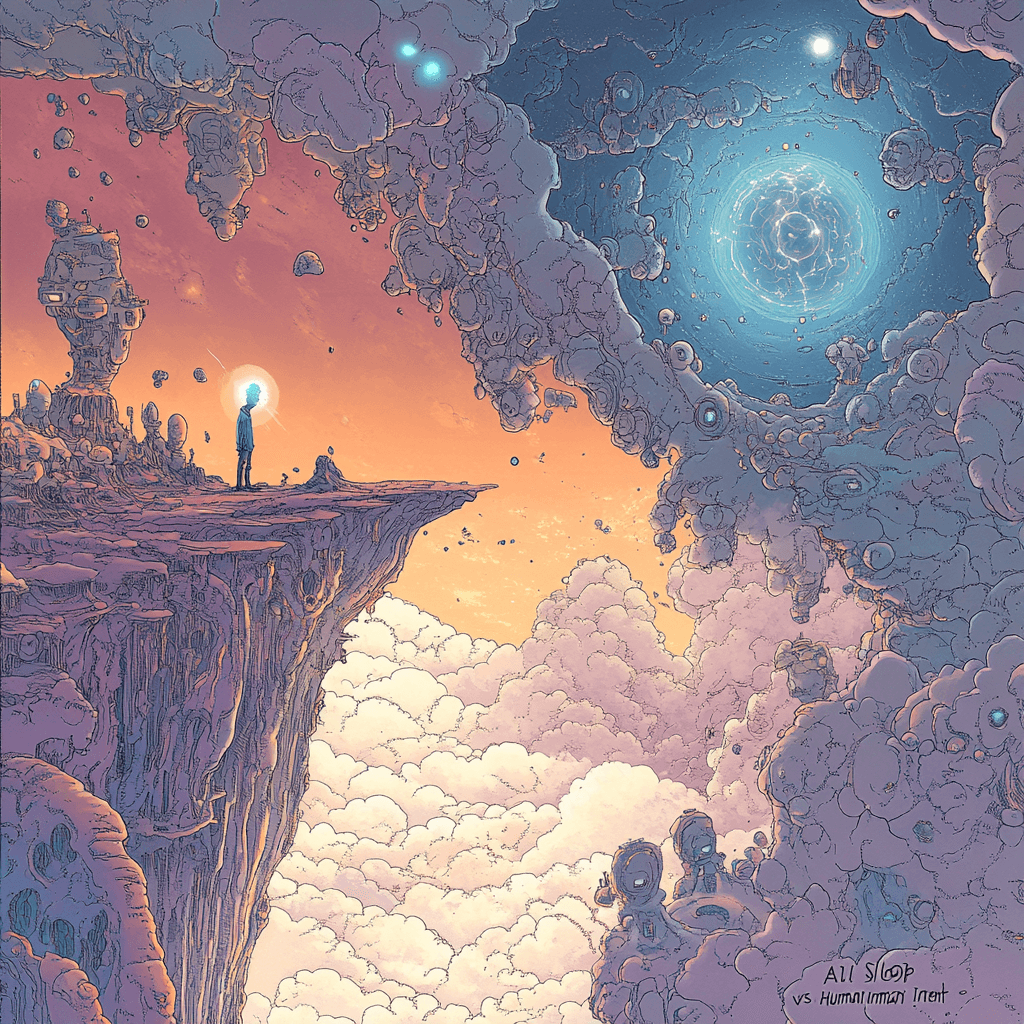
Human Intent in the Age of AI: Insights from Our Chat with Siddharth Ahuja, Creator of the Ableton & Blender MCPs
The developer community has been buzzing about the possibilities unlocked by the Model Context Protocol (MCP), and few examples have captured the imagination quite like Siddharth Ahuja's MCP servers for Ableton Live and Blender. These notoriously complex creative powerhouses, suddenly accessible through natural language prompts via tools like Cline, feel like a glimpse into a new era of software interaction. 🧩 Built an MCP that lets Claude talk directly to Blender. It helps you create beautifu
The developer community has been buzzing about the possibilities unlocked by the Model Context Protocol (MCP), and few examples have captured the imagination quite like Siddharth Ahuja's MCP servers for Ableton Live and Blender. These notoriously complex creative powerhouses, suddenly accessible through natural language prompts via tools like Cline, feel like a glimpse into a new era of software interaction.
🧩 Built an MCP that lets Claude talk directly to Blender. It helps you create beautiful 3D scenes using just prompts!
— siddharth ahuja (@sidahuj) March 11, 2025
Here’s a demo of me creating a “low-poly dragon guarding treasure” scene in just a few sentences👇 pic.twitter.com/P3THhhcTk3
We recently had the chance to chat with Siddharth – a designer first, but also an engineer who ran his own product studio before diving deep into AI – about his work and his thoughts on where this is all heading. What started as curiosity about his specific MCPs quickly evolved into a fascinating discussion about the future of software, the role of AI, and the enduring importance of human creativity.
Natural Language as the Means of Accessibility
Siddharth mentioned that his motivation for building the Ableton and Blender MCPs stemmed from his own experience with these tools. He saw MCP as an obvious way to bridge the gap, creating an "intelligence for an interface" that allows users to achieve results without needing deep prior knowledge of the intricate UIs. Why Blender and Ableton? Because, as he noted, they have a "really high barrier to entry" compared to something like Figma, where a novice can still achieve something quickly. Making these specific tools accessible felt like a true test case for MCP's potential. As he put it, "these are really complex tools [that] are now accessible."
This immediately resonates. How many powerful tools sit underutilized because of their steep learning curves? MCP, acting as that intelligent interface layer, promises a future where the barrier to entry for sophisticated software is dramatically lowered. Instead of memorizing menus and shortcuts, users can simply state their goals. This shift also hints at a future where interaction methods themselves evolve – perhaps moving beyond typing towards more natural voice commands, further reducing friction, as we briefly touched upon in our chat.
Available now in the MCP Marketplace: Ableton Live pic.twitter.com/QgmhG2Nu1W
— Cline (@cline) March 27, 2025
Mulling Possibilities: AI Control Center or AI-Native Tools?
This accessibility raises a fundamental question Siddharth pondered: what does the future of these tools look like? He outlined two potential paths:
- The AI Control Center: Existing applications become "MCP enabled," allowing a central AI agent (like Cline) to orchestrate workflows across multiple tools (Blender, Ableton, Unreal Engine, etc.) based on high-level goals. Imagine telling your agent, "Create a low-poly game scene with a fitting soundtrack," and having it coordinate the necessary actions across different software.
- AI-Native Tools: New tools emerge, built from the ground up with AI interaction at their core. These might feature radically simplified interfaces, abstracting away complexity and relying heavily on natural language or intuitive controls guided by AI. Siddharth speculated that tools like Blender might even become obsolete, replaced by collaborative, web-based, AI-powered alternatives.
It feels like we're currently in a "bridging" phase, where MCP provides a clever way to retrofit existing applications for the AI era. Siddharth noted that building the MCP server itself is often straightforward thanks to the standard, but the real work lies in connecting it effectively to the local tool (like Blender or Ableton) – though even that becomes easier once the communication patterns (like sockets) are established. He also drew parallels to Bret Victor's ideas on the future of programming – giving an agent a goal and letting it handle the underlying abstractions, a concept proven feasible for code generation and now extending to interfaces via MCP. But the disruptive potential of truly AI-native design looms large.
Human Intent vs. AI Slop
Regardless of which path prevails, a critical challenge emerges: ensuring quality and purpose in a world awash with AI-generated content. Siddharth introduced a powerful concept: Human Intent.
He likened the current state to self-driving cars – the AI can handle the mechanics of driving (execution), but the human needs to provide the destination and the "why" (intent). In the creative process, AI can generate code, visuals, or music, but without genuine human intent – a unique vision, taste, and understanding of the problem space – the output often feels soulless, becoming what many are calling "AI slop." As Siddharth observed, AI can write well, "but there's no soul in it." You can feel the difference.
"Everything that needs intent, how do we make that still human?" Siddharth asked. He argued that the truly magical results come not from fully automating creativity, but from using AI to augment the process while keeping human vision firmly in the driver's seat. It's about abstracting the grunt work, the things that "don't need judgment," while preserving the human element – the taste, the unique perspective – where it matters most. This requires careful design, resisting the temptation to hand everything over to the AI, because, as he emphasized, "why you need humans [in] the loop is because humans are the ones providing intent."
The Human Editor and the AI Agent
This leads naturally to a new paradigm for creative work: the Human Editor and the AI Agent. In this model, the human acts as the director, providing the core idea, the taste, the critical feedback – the intent. The AI, equipped with tools like file system access, terminal execution, and MCP integrations, acts as the capable agent, executing the tasks, generating drafts, and iterating based on the human's guidance.
This iterative feedback loop allows creators to leverage AI's speed and capabilities without sacrificing their unique voice or vision. Interestingly, Siddharth suggested the back-and-forth itself can help build intent and clarity, refining the initial idea through interaction. The more iterations, the more the human's intent is infused into the final product. As Siddharth, a designer who codes (leveraging AI tools for "80%" of his own development work), noted, this process requires "human judgment or taste" – skills that become even more valuable in the age of AI. It's about knowing "the really simplified, really core nugget of what you're trying to do," a process that requires that hard-to-define, subconscious refinement that humans excel at.
The Intentional Future
Our conversation with Siddharth serves as a potent reminder: as AI reshapes the landscape of creation, the tools themselves are only part of the story. The true differentiator won't be the sophistication of the AI agent, but the clarity and quality of the human intent guiding it. Whether we leverage MCP to breathe new life into complex legacy tools or embrace the streamlined power of AI-native platforms, the responsibility falls on us – the creators, the designers, the developers – to choose workflows that prioritize purpose over mere production. Tools like Cline, built on transparency and human oversight, offer a pathway. But ultimately, navigating the age of AI requires a conscious commitment to infusing our work with the very soul the machines lack, ensuring we build signal, not just more sophisticated slop.
What are your thoughts on the future of creative tools and the role of human intent? Join the discussion in the Cline Discord or on Reddit.


